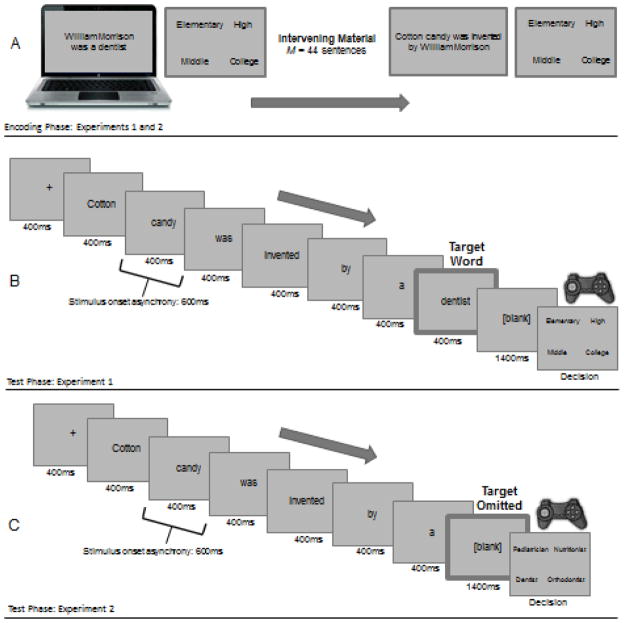Figure 1.
During encoding, sentences were presented one at a time on a computer. Duration of presentation was based on the number of characters in the sentence and ranged from 3–7 sec (100 ms per character). After reading each sentence, subjects verbally indicated when in school the fact in the sentence would be learned. Sentences were presented in one of 12 random orders, each used approximately equally often (Panel A). During the ERP test (Experiment 1), new sentences were presented one word at a time. ERPs were time locked to the target word, which always was the last word in the sentence. After each sentence, subjects used a game controller to determine when the fact would be learned. Trials were presented in one of 4 random orders, each used approximately equally often (Panel B). During behavioral testing (Experiment 2), new sentences were presented one word at a time. The final word was omitted and followed by a decision screen with four choices, one of which was correct. Subjects registered their choices with a game-controller. Trials were presented in one of 8 random orders, each used approximately equally often (Panel C).

